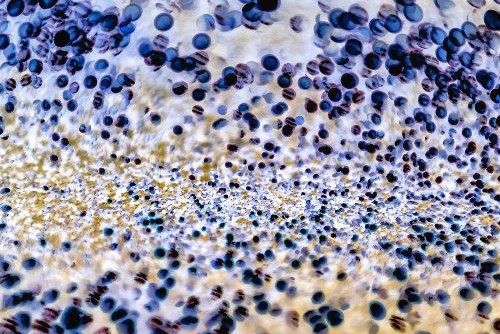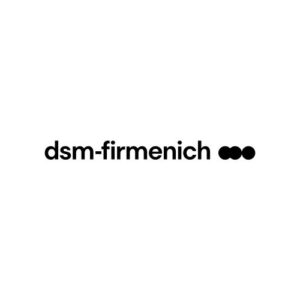Waste in the gut: Peptidoglycans of bacterial origin

Optimal gastrointestinal functionality is influenced by many factors, including gut microbiota and the way it interacts with the host.
In fact, the gastrointestinal microbiota has proven to modulate the development of the gastrointestinal tract and improve its morphology, stimulating the development of the gastrointestinal immune system, promoting host nutrition and reducing gastrointestinal pathogens. Therefore, the gastrointestinal microbiota has a significant impact on host or animal welfare (Figure 1).
Figure 1 – Functions of the gastrointestinal (GIT) microbiota.

Gastrointestinal health problems on the increase
The gastrointestinal microbiota is composed of both gram-positive (G+) and gram-negative (G-) bacteria. The bacterial cell wall of G+ bacteria, in particular, but also of G- bacteria is a significant source of peptidoglycans (PGNs). When fragments of these cell walls accumulate in the gastrointestinal tract and become “intestinal waste,” they can decrease gastrointestinal functionality. Nutrient digestion and absorption are particularly prone to the adverse impact of this cell debris.
Incidence of subclinical necrotic enteritis and nonspecific small intestinal overgrowth of certain intestinal bacteria (dysbacteriosis) have been on the rise since antibiotic growth promoters were banned in the European Union. These health problems typically occur in 20 to 30-day-old broilers and result in wet litter, nonspecific enteritis, poor weight gain, and decreased nutrient digestibility and absorption.
Bacterial overgrowth impacts nutrient absorption
An increase in bacterial burden leads to an increase in intestinal permeability, bacterial translocation and absorption of endotoxins such as ammonia and D-lactate. When bacteria overgrow in the intestine, bile acids are deconjugated by bacteria resulting in malabsorption of fat and fat-soluble vitamins. One product of deconjugation is lithocholic acid, which is poorly absorbed and acts as a toxin on the intestinal mucosa.
Naturally occurring bacterial cell death generates PGNs in the gastrointestinal tract. When an increase in the gastrointestinal microbiota load occurs, the result is an increase in bacterial cell debris, hence more PGNs. In an in vitro study, it was observed that the ratio of intact bacteria to bacterial cell debris was approximately 3.5 to 1. The ratio decreased to 1.2 to 1 after 24 hours, and dropped to 0.45 to 1 after 96 hours. This demonstrates that the spontaneous lysis of cultured bacteria occurs over time. In an in vivo study, the ratio of intact bacterial cells to cell debris differed significantly depending on the location in the gastrointestinal tract, suggesting that older bacteria populations are found in segments of the tract where the ratio of intact bacteria to bacterial debris is at its lowest.
When bacteria and their cell debris (PGNs) accumulate on the intestinal mucosa they can impair absorption by competing for nutrients and by causing enterocyte damage resulting in increased intestinal permeability. Anaerobic overgrowth is most common during intestinal bacteria overgrowth. Coliforms, staphylococci and enterococci (Clostridium and Bacteroides spp. predominating) are the main species of bacteria in the duodenal juice of animals affected by intestinal bacterial overgrowth. Anaerobic bacteria and the consequent accumulation of their PGN-rich cell debris, have a much greater potential to damage the intestinal brush border and cause malabsorption. Moreover, anaerobes, especially Bacteroides, are the major cause of bile salt deconjugation which results in fat malabsorption. Various gut health conditions leading to malabsorption are often associated with secondary overgrowth of bacteria in the small intestine.
Imbalances disrupt gastrointestinal functionality
Normal composition of the microbiota of the gastrointestinal tract plays a fundamental role in the preservation of its integrity and normal functioning in the animal. Therefore, any disturbance or alteration of this composition may lead to bacterial overgrowth. This, in turn, can lead to subsequent profound malabsorption in the proximal portion of the gastrointestinal tract.
In the intestinal lumen, bacterial cell wall fragments containing PGNs can be released from commensal bacteria. A variety of efficient mechanisms are devoted to their disposal to prevent them from becoming harmful to the organism. Gastrointestinal functionality can be disrupted as a consequence of the imbalance between the production and disposal of cellular debris. Therefore, a prolonged and increased exposure to PGNs in the GIT can hinder optimum gastrointestinal functionality.
Normal gastrointestinal motility involves a complex, tightly coordinated series of events designed to move material through the gastrointestinal tract. Excess bacteria in the small intestine decreases gastrointestinal motility. Gut motility is crucial for the prevention of colonisation of bacteria in the small intestine as it sweeps and moves bacteria and the associated cell debris into the large intestine.
It has been suggested that PGNs are absorbed in the intestinal mucosa. Therefore, timely disposal of PGNs and other cell debris may contribute to maintenance of gastrointestinal functionality.
 Beheer
Beheer





 WP Admin
WP Admin  Bewerk bericht
Bewerk bericht